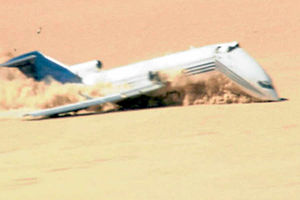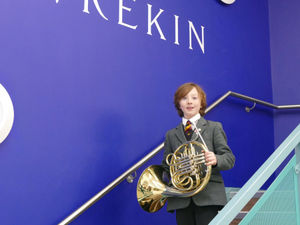The Plane Crash - TV review
No stranger to TV controversy, Channel 4 invited viewers to book their virtual seat on a doomed flight to promote this one-off documentary.

More than 30,000 people duly logged onto the channel's website to sign up for this intriguingly macabre stunt. Each 'passenger' was issued with a boarding pass, then urged to log back on after the show to see how they would have fared in their chosen seat.
Now it's not every day you get to travel first class in a smart Boeing 727, so I went for the plush option; window seat A, in row 3. Not too far from the free bar, not too close to the smelly loos, but tucked away discreetly enough to sneak forty winks.
Except, of course, on this particularly flight, no-one was going to be dozing off for long, because the idea was to deliberately crash the 170-seater plane into the middle of nowhere.
In keeping with the aerial theme, I watched the horror unfold at altitude, having been banished to the TV upstairs by my aerophobic wife who wouldn't have slept for a month if she'd tuned in. So, table stowed away, and seat in a very upright position, I was well aware that my nearest emergency exit involved a 15ft leap onto the roof of the garden shed.
Style (not to mention lashings of nerdy techno-babble) often threatened to overtake substance during this drawn-out 90-minute affair, based on the principle that cars are crashed all the time to aid advances in safety, so the same should work with an aeroplane.
The build-up felt interminable, though.
Captain James Slocum was to pilot the aircraft on her final flight, ending with a radio-controlled forced landing in a remote, uninhabited area of the Mexican desert after the crew had parachuted to safety.
Everything that happened at the culmination of this four-year campaign was to be recorded by an array of state-of-the-art cameras. The aircraft was also fitted with sensors and filled with crash test dummies, including three with 'breakable' bones, valued at £93,500 each.
But you're already getting impatient. I can sense it. So was I, 20 minutes in. Never mind all this guff about who was flying the thing, where the production company bought the plane from, and how they fitted the undoubtedly clever hi-tech gizmos, just cut to the bit we're all waiting for – smash the plane to smithereens, and let's see what happens.
Even the X Factor isn't as painfully drawn out as this . . .
Considering the experiment had only ever been attempted once before, by American space agency NASA, we should have been on the edge of our seats. But despite its earnest, Jason Bourne-style soundtrack, the first hour was downright dull.
It's fair to say the pre-programme hype and online gimmicks had rather oversold the show. Finally, though, the plane did crash, and officials began sifting through the wreckage.
By now, though, there was less than 30 minutes to chew over the results.
So, what did we learn? Well, first and foremost, that first class seats at the front might be the most expensive, but they're also the most vulnerable.
In seat 3A, I'd have stood no chance. In the economy seats at the back, meanwhile, impact was little more than the equivalent to a shunt from a fairground bumper car.
Aside from that, the only real conclusion was that adopting the brace position is still the safest bet, and it's mighty wise to fasten your seatbelt. You don't say.
Yes, that really was it. Half a million quid was spent for that, and it's 95 minutes of my life I won't get back. I could have flown to the south of France in that time . . . in economy class at the back of the plane, of course.
Carl Jones




